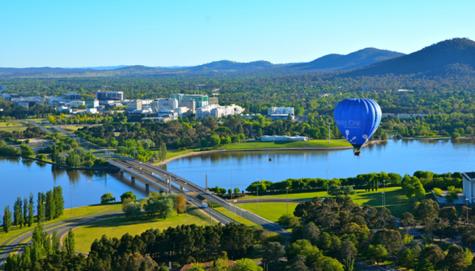To help celebrate the centenary of Canberra on 12th March, the National Museum of Australia this week opened an exhibition called Glorious Days: Australia 1913 which will run until the October school holidays.
The exhibition is an opportunity to step back 100 years and immerse yourself in a time of tremendous optimism when Australians took pride in their distinctive culture, high standard of living and sporting prowess.
Canberra came about as a capital city because both Sydney and Melbourne wanted to be the capital but no-one could agree. After extensive debate, and several votes, the Canberra-Yass region was agreed in 1908 and the Chief Surveyor, Charles Scrivener was instructed to find somewhere picturesque and scenic. It was the culmination of a dream for many of the fathers of Federation.
The wife of the Governor-General, Lady Denman, declared ‘Canberra’ to be the name of the nation’s new capital on 12th March 1913. Although scholars differ on this point, the name is popularly believed to come from the local Aboriginal community, the Ngunawaal people, to mean ‘meeting place’. Coincidentally, before arriving in Australia in 1910 to accompany her husband, Lady Denman was active in women’s suffrage issues in the UK and took a keen interest in the National Council of Women in Melbourne.
In 1913, Australians saw their new nation as progressive and free to make its own future in the world. It is seen as a year when people embraced the modern world of automobiles, aeroplanes, rollerskating and cinema, although attitudes and prejudices from the past persisted – particularly in respect of the Indigenous population.
Glorious Days features artworks, costume, music and newsreel footage. It’s a wonderful opportunity to look back 100 years, and ask yourself: how much has changed, and what has stayed the same.
Fast Facts about 1913
* Not many city slickers. The population was nearly 5 million with almost two-thirds living in rural areas.
* White babies welcome. A baby bonus of £5 was payable to every white woman for a live birth.
* Politics was close. The election held later in the year saw a change of Government, with Joseph Cook’s Liberal Party defeating Andrew Fisher’s Labor Party by one seat. It was the first time compulsory voting was introduced.
* They had the blame game then. Sydney was quarantined from the rest of the nation because of a smallpox outbreak. There were 1,763 cases of it but only one death. The quarantining severely tested Federal-State relations!
* What we loved. The popular past times were roller-skating, swimming, the tango and watching Wagner’s Ring Cycle at the opera.
* Who we loved. Cricketer Victor Trumper, rugby league great ‘Dally’ Messenger (who played his last season in 1913), swimmer Fanny Durack (who set three world records in a day!), boxer Jerry Jerome and even then we loved our horses – the Melbourne Cup winner was Posinatus.
* What we sang. When Irish Eyes are Smiling, You Made Me Love You, Tipperary, Land of Hope and Glory and When I Lost You.
* What we watched. Cinema was very new and there were not many cinemas around, but we did have a film industry and we also enjoyed Quo Vadis? an Italian biblical epic.
* What we read. Again, we haven’t changed much. Some serious stuff, a children’s book, a cookbook and the 50 Shades of Grey equivalent for its time. A Curate in Bohemia (Norman Lindsay), Sons and Lovers (D H Lawrence), Swann’s Way (Marcel Proust), The Magic Button (Ethel Turner) and Home Cookery for Australia by the Presbyterian Women’s Missionary Union.
* * *
You can visit the Glorious Days exhibition from now until 13th October at the National Museum of Australia. Tickets are $5 for children, $8 for concession, $10 for adults or $22 for a family pass, and can be purchased online at Eventbrite.



















__small.png)










